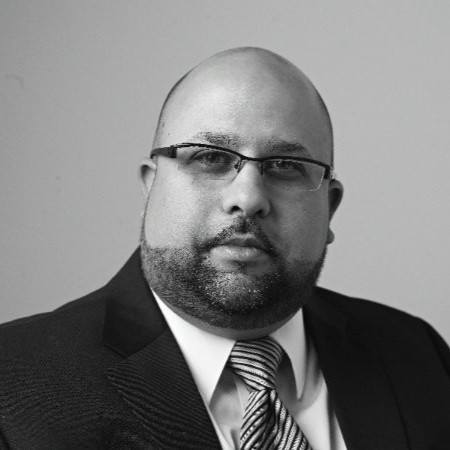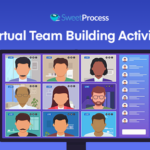Building High-Performing Teams With Effective Communication
Last Updated on March 8, 2024 by Owen McGab Enaohwo
Ineffective communication ruins business operations as team members will hardly be on the same page.
In charge of the operations at Vendata Biosciences, a biotech company, Dan Couto got a hold of the many moving pieces by cultivating a culture of effective communication among his team members.
Dan Couto is the guest in this episode of the Process Breakdown Podcast. He speaks with the host, Dr. Jeremy Weisz, about streamlining communications with a blend of in-person meetings and communication tools for success.
Listen to the audio interview
Subscribe for more business success stories
Key Resource List
SweetProcess — Sign up for a 14-day free trial. No credit is required.
Show Notes
[0:26] Intro
- Dr. Jeremy Weisz mentions some of the past guests who have been on the show including David Allen of Getting Things Done, Michael Gerber of the E-Myth, and Cameron Herold of the COO Alliance.
- Dr. Jeremy Weisz introduces SweetProcess, a workflow tool that helps businesses to streamline their operations even in life-or-death situations.
- SweetProcess offers a 14-day free trial without a credit card.
[1:47] Dr. Jeremy Weisz introduces the guest, Dan Couto.
[2:21] Dan gives an overview of what Vendata Biosciences does as a business.
- Vendata is a biotech company that develops live bacterial consortia, which are groups of bacteria that work together with its teams as therapeutic drugs.
[5:04] What’s the impact of bacteria on the human body?
- Some healthy bacteria are good for the human body.
- Some bacteria aid the immune system and speed up the healing process.
[6:45] Dan talks about how Vendata Biosciences was able to expand its product base.
- The company had about 40 people on its team when it had a single product.
- As the organization rolled out more products, it increased the number of people on its team for efficiency.
- The management team built business systems and processes to streamline communications at the organization.
- If you don’t have the proper structure for communication, there’s a lot of waste and firefighting.
[9:01] How did the organization set up its communications structure to facilitate its growth?
- The program team is the heart of communications.
- The team meets weekly to get a download of all the critical path items regarding timelines.
[10:39] What type of people in the organization are in the program meeting?
- The meeting consists of representatives from clinical development and clinical operations, chemical manufacturing control (CMC), research, a program manager, and a program lead.
[12:19] Dan reveals the frequency and duration of the program meeting.
- The program meeting varies among programs.
- Some program meetings are done once a week and others are done once a month. It depends on the activity.
[14:31] What’s the decision-making process at Vendata Biosciences in urgent situations?
- No matter what the issue is, the program team has to deliberate on it to determine the impacts on risks, timelines, and costs.
- It’s important to get the input of experts on the subject matter to guide your decisions and mitigate risks.
[17:07] Dan explains what happens after the program meeting.
- Each of the functions in this matrix has its own role within the chain of events.
- The organization has a culture that doesn’t wait around for the program meeting if decisions need to be made urgently.
[19:08] How are decisions made at the program meeting communicated across the entire organization?
- Each department at the organization has its own meeting once a week.
- Other logistical meetings are held in smaller units to resolve rising issues even before they get to the management level.
- It’s important to build a culture of collaboration so people can feel comfortable communicating freely and resolving issues.
[21:40] Dan talks about the tools the team at Vendata Biosciences uses for communication.
- Although Dan prefers in-person meetings, the team uses a variety of tools to communicate.
- The team uses phone calls to communicate because they can miss important details when communicating via writing in emails.
- Team members text on mobile devices to communicate on the go.
[25:41] How does the organization structure its weekly in-person meetings?
- The meetings are agenda-driven with a set of activities to be done.
[27:50] Dan reiterates how a good communication structure enhances employee motivation.
- An effective communication structure gives everyone at the organization a voice.
- The team does a 360 review of everyone at the company with a software application.
- If anyone doesn’t abide by the company’s corporate values, the management follows up on it.
[29:28] Dr. Jeremy Weisz directs the audience to visit the Vendata Biosciences website to get more information about the organization.
- The audience can also check out SweetProcess for information on how to streamline their operations and listen to more episodes of the Process Breakdown Podcast.
[29:41] Outro
About Dan Couto

Dan Couto is the chief operating officer at Vendata Biosciences, a microbiome company. He has more than 25 years of experience in starting and advancing biopharmaceutical development and manufacturing organizations.
As an operations management executive, Dan has first-hand experience in leading organizations through improvement initiatives and implementing higher levels of capability, growth, and productivity.
Transcript of the interview
Speaker 1: Welcome to the Process Breakdown Podcast, where we talk about streamlining and scaling operations of your company, getting rid of bottlenecks and giving your employees all the information they need to be successful at their jobs. Now, let’s get started with the show.
Dr. Jeremy Weisz: Dr. Jeremy Weisz here, your host of Process Breakdown Podcast, where we talk about streamlining and scaling your operations of your company, getting rid of bottlenecks and giving your staff everything they need to be successful at their job. I’m going to introduce a Dan Couto in a second. But before I do, I like to point out other episodes people should check out. Dan and people, we had David Allen of Getting Things Done. Michael Gerber of the E-Myth. Cameron Herold, the COO Alliance, just many different things. We have lots of COOs, directors of operations listening and on the show. So listen to other episodes and check them out. And this episode is brought to you by SweetProcess. So if you’ve had team members ask you the same questions over and over again, and maybe the 10th time you spent explaining it, there is a better way. There is a solution.
Dr. Jeremy Weisz: SweetProcess is actually a software that makes it drop dead easy to train and onboard new staff and save time with existing staff. So not only do universities, banks, hospitals, and software companies use them, but when I was talking one of the owners, Owen, first responder government agencies use them in life or death situations to run their operations. So you could use SweetProcess to document all the repetitive tasks that eat up your precious time and your team’s time, you could focus on growing and empowering them. You could sign up for a free 14-day trial, no credit cards required. Go to SweetProcess.com. That’s sweet like candy, S-W-E-E-T process.com. I’m excited to introduce Dan Couto, the COO of the Vedanta Biosciences, which is a microbiome company on the forefront of defined bacterial consortia. And I’ll have him explain what that is. Dan is nearly 30 years of biotherapeutics development experience, holding several senior operations, any manufacturing positions in six other companies ranging from startups to big pharma. Dan, thanks for joining me.
Dan Couto: My pleasure. Thanks Jeremy.
Dr. Jeremy Weisz: Let’s start off a little bit about what the company does.
Dan Couto: Sure. So Vedanta is a biotech company that develops live bacterial consortia, which are groups of bacteria that work together its teams as therapeutic drugs. So they’re oral dosage form, they go into your intestinal tract. They colonize. And what they do is they shift and manipulate the immune system. They are able to regulate, upregulate or downregulate for different types of things. An example that one of the products that we’re developing is our VE 202 product which is a treatment for ulcerative colitis IBD. And what that does is it downregulates your immune system with Treg induction so that your body can tolerate what’s going on better. Which is what happens with most autoimmune-based diseases, there’s an intolerance that’s built.
Dr. Jeremy Weisz: What other use cases? So ulcerative colitis, what other people are using it for?
Dan Couto: We have a different product called VE 416, which is in trials right now for peanut allergies. So peanut allergy is an intolerance as well, right? And so what it does is it’s a different group of bacteria that we’ve come up with that targets different mechanisms, but it downregulates your system that’s then trying to fight against this peanut and be more tolerant, right? We have other products that we develop that upregulate as well, that induce-
Dr. Jeremy Weisz: Like what?
Dan Couto: VE 800 is one of our products that induces CD8 cells, which are the cells that go and kill foreign things. And what they do is in conjunction with other cancer treatments like checkpoint inhibitors would then go and start to target and speed up the process of healing and destroying cancer cells.
Dr. Jeremy Weisz: That’s amazing.
Dan Couto: Yeah. Who knew the bugs in your gut did more than just metabolism.
Dr. Jeremy Weisz: Yeah, I mean, people think a bacteria is bad, but there’s a lot of really good bacteria and probiotic, other things too… That we have good bacteria in our intestine, in our body that actually helps to keep us healthy. There’s several books out there on that. Like how important that gut bacteria is in your overall health and immune system in general.
Dan Couto: One of the books, one of our scientific co-founders wrote Brett Finley in British Columbia. He wrote this book, Let Them Eat Dirt. That’s one of my favorite ones.
Dr. Jeremy Weisz: Let Them Eat Dirt?
Dan Couto: Yeah, Let Them Eat Dirt. It’s a good read. It’s interesting. It’s applicable.
Dr. Jeremy Weisz: Love it. Will have to check it up. Let Them Eat Dirt. Now with COVID and everything, we’re almost too clean, right? And at this, we’re going to swing the other way.
Dan Couto: Yeah. I think the use of antibiotics ramping up over the last 40, 50, 60 years has start to have its impact in our abilities. And only over the last 10 years is when people really truly started to understand what your microbiome in your gut does. And that’s why a whole slew of different technologies have come out of that finding.
Dr. Jeremy Weisz: Yeah. I can geek out on this all day as my background is in biochemistry, studied nutrition for decades. But for people who don’t care, we’ll talk about the operations but if not go check out what they’re doing on their website and Let Them Eat Dirt. So Dan, from the standpoint of operations and systems, there’s a lot of moving pieces here from the quality control to the product, to probably the trials that are going on. So I wanted to start off with, I know the company had one product now has five products, but moving from one product, there’s a lot of moving pieces to two. What were some of the systems and operations that you had to put in place to do that?
Dan Couto: Right. It’s a great question, Jeremy. When I joined Vedanta about six years ago, I was employee number 13. And when we came in, we strategically had made a decision to build an internal for competency for the manufacturer of these types of products because they’re unique. And it’s not trivial to be able to try and make these things. And so we started out with our lead product VE 202, which is a treatment for reoccurrence of C diff infections. And that product took most of the people’s time and energy as we were building to 20, 30, 40 people. To be able to get that into the clinic, it was like everybody was focused. You fast forward, over time and we started at our second and third and fourth products and you start to have a portfolio that are all moving in parallel. And now you have multiple teams, program teams’ functions that are trying to do multiple things at the same time.
Dan Couto: And so yeah, you grow to what we are now. For example, we’re about 120 people, but you’re also building other business-based systems to try and communicate with one another so that everybody’s aligned. And that’s the piece where it starts to fall down because, not for us but for companies in general, if you don’t have the proper structure for communication then there’s a lot of waste in firefighting and confusion that happens. It’s very important to spend a lot of time early on to think about how communication happens within these functions in companies.
Dr. Jeremy Weisz: Yeah. I know before we hit record, we were saying how setting up communicative structures has to be there or the company is not going to be effective. So talk a little about what does that foundation look like to set up the communication structure?
Dan Couto: So we have the heart of it. I think of it as kind of a… the way that a body works, right? You have the heart of it, which is the program team. And the program team is made up of multiple functions cross-functionally. And this is a structure that a lot of companies have. What makes us I think a little bit more unique has to do with where those connect up within our organization in reporting. There’s a head of program management that then sits on a executive committee leadership team.
Dan Couto: And weekly we meet and get a download of all the critical path items. This is not just an update. This is the things that pertain to timelines, things that will govern timelines. And to be able to have program managers focus on critical path items is super key because otherwise program teams can be like a talk show where you have a host that moderates and then everybody gets 10 minutes to talk about whatever it is they’re doing and it’s updates. But not everything that people are talking about is pertinent to the critical path or an issue that’s going to derail the critical path. So the philosophy around how you focus and what you focus in the program team gets to an effective program meeting.
Dr. Jeremy Weisz: So how many people are or what type of people in the company are on that program meeting?
Dan Couto: Sure. For a biotech company like ourselves, we have representatives from clinical, which for us makes up clinical development and clinical operations. We have representatives from what we call CMC, which is Chemical Manufacturing Control, which is quality and manufacturing, technical operations PD. And then in research, we have representatives coming from research, for us is within more of the discovery range for research. And then you have a program manager. And what we’re now talking about is adding a layer which other mature companies start to do is a program lead. Program manager and a program lead operate, not unlike a CEO and a COO where the COO is more like the program manager that looks at timelines and milestones and alignment. The program lead is able to actually more like the CEO, take the whole program as a business where it comes to budgets or it comes to strategy, or it comes to alignment with other things within the company. So it’s like the outward bigger picture versus the tactical execution. Right?
Dr. Jeremy Weisz: And so to give people a sense of kind of the frequency of the meeting and number of the meetings. So because it starts with this program team meeting talking about the critical path and there’s different people from all of these different teams that report in the critical path, what’s the frequency of these type of meetings and how long are they?
Speaker 3: Yeah. It varies amongst our programs. Some of the programs are in very critical or active kind of phases and therefore we have program meetings maybe once a week. Whereas other programs we may meet once a month. It depends on the activity. The other thing I would say is that the program meeting itself for us lasts about an hour and that’s it. And what comes from it, if it’s an effective meeting, are a whole series of actions that then spin off into sub-meetings for other specific people within the functions to go and do, and then come back next week or come back next month and report on what the input is. We don’t wait for meetings if things are critical, we communicate. And that actually gets more to the point of a culture of a company and a sense of urgency that everybody takes ownership on. That’s kind of a foundational base that we’ve laid with Vedanta amongst other values that we have.
Dr. Jeremy Weisz: I’m going to go on that tangent for a second and I’ll come back to the meetings, but let’s say something comes up. Something always comes. I was talking to someone the other day and they worked at Disney for 10 years and they need to process 400 people through this restaurant in 43 minutes or this one part of the restaurant. And if there’s a hitch in the system that throws thing off. Right? So what happens then? So something… I’m trying to think of an example, but one example that I think of, I don’t know if this is true, but let’s say in the critical path meeting, there’s like, "Oh, we are selling a lot of these things. We need to increase manufacturing." It affects overall, but the manufacturing probably team goes off to their group and talks about that specific thing. What would be an example of something that, "Listen, we need to just take care of this now and kind of put everything else aside for a minute."
Dan Couto: Yeah. So an example of that, we’re actually going through this week, right? We’re getting to a point where we’re introducing into the clinic another product. And we’re at the point in CMC where we’re picking our capsule, the dosage strength.
Dr. Jeremy Weisz: Yeah. And CMCs a manufacturing piece, right?
Dan Couto: Manufacturing piece. And so we’re picking the dose and that choice is actually cross-functional, right? But in picking the dose…
Dr. Jeremy Weisz: Oh, totally because there’s research involved in it. There’s clinical. How much is it depends how big the capsule is. So it affects.
Dan Couto: That’s right. So the choice of the desire to be able to either increase how much we treat a patient with or decrease it, will affect a whole slew of things internal to the program team. So no matter what kinds of aspirations or decisions are wanting to be made outside the program team, we always put it forward and then have the program team ruminate on it as to what the impacts are on risk, on timelines, on costs, on a lot of things, right? You have to go back to the subject matter experts that are in it in the weeds to understand what the impact of something that you’re saying you would like to have.
Dr. Jeremy Weisz: Yeah. I could totally see that the clinical people are like, "I’m making this up right. We need 300 milligrams of X. Well, we can’t fit that in one pill. Can we fit that in a three pill doses?" And now that’s going to affect totally the bottle size and everything else accordingly.
Dan Couto: [inaudible 00:16:17] supply, you name it. And so from that point of view the assessment of the impact is really key. And then that iterates back to the team that said, "Okay, we’d like to have this happen." Now they’re more informed to be able to make decisions on priorities of what’s important for the company, right?
Dr. Jeremy Weisz: Yeah. I could see that when you’re ready to launch a product in that case, it’s like, "We need this information. Now we can’t wait for the next meeting. We need to get our heads together and get ready." So following off the norm, right? So let’s say you’re meeting once a week, it’s an hour. And then it’s this critical path. What happens after that? People kind of go back to their teams and what happens from there. Because we’re talking about the communication chain.
Dan Couto: So each of the functions, which are… I’m making a motion up and down with my hands, right? Each of the functions that are in this matrix, they have their own role responsibility within this chain of events that happen to make drugs. Right? And so you have a program team to align, but each of the functions understands what their role is in this whole chain. If something changes they assess for themselves, what does that mean to me? Right? And they go and adjust, and then they communicate back to the program team. The other piece that’s very important that I wanted to point out has to do with the meeting itself is an event, but we have a culture that doesn’t wait around for the meetings if decisions need to be made. Right?
Dan Couto: So people outside the meetings can get together and start to meet and discuss and bring up things and raise issues well before us having a meeting. That’s one of the beauties of being in a small biotech company is the clever thriftiness that we have and the speed that we can operate, make decisions on versus larger companies that have distance between them or multiple sites and multiple processes to go through to make decisions. We can cut right through that and move quickly, right?
Dr. Jeremy Weisz: So to give a kind of an overall sense for people. So there’s one main meeting, let’s say it’s once a week for an hour, with all the different heads of these different departments, then they go off their team. What does that frequency look like? How does that then trickle down as far as the frequency of those type of meetings or how they’re communicating that?
Dan Couto: So I would say on average, each of the functions have their own functional meeting once a week as well. And what that does is it aligns vertically all of the programs that are coming in with their own requests, asks, requirements. And then tactic they go through it and they start assigning resource and who needs to do what and prioritization within themselves to deliver on what the programs need. And so those happen weekly. And then there are probably other meetings that are smaller than a program meeting, but larger than a function where a couple of functions get together that have to deliver on something together. And they are just logistical meetings to work through either things that arise that they need to take care of, or don’t. The whole idea of an issue happening, something happens and then it goes from a person within a function that tries to problem solve it reaches out to other functions they problem solve together.
Dan Couto: It, it then starts to either get solved or bubble up quickly. And a lot of times people within the C-level, like where I’m sitting, don’t fully appreciate all of the things that just happen within the company that don’t get to their level yet, because problems are being solved all over the place. And things are being dealt with all over the place. I had a mentor that used to just use that, a cliche analogy of a duck on water, where the top of the water’s calm and clean, but the duck’s paddling away like a mad person with the feet underneath, but you don’t see that, right? So I think there’s a lot happening organically within the company, as far as communication meeting structures, that goes towards culture. How do you build your culture itself so that people feel comfortable to collaborate like that, right?
Dr. Jeremy Weisz: So those are meetings, right? It may be in person and maybe in Zoom in this day and age, how else are people communicating? Are there different software systems or email? How are you finding is the most efficient, best way as well as just in-person or video?
Dan Couto: Yeah. The tools that we have at our disposal now are more so than we did two years ago and more so than we did 20 years ago. Right? I’m an old school guy. I like getting people in a room and talking things over. I even like the fact that people could get together prior to the pandemic and work through issues and find out things. The tools that we have now, other than the video chat, which I think through Zoom or through Teams or others are great tools and we use them. We obviously use email all over the place. That’s kind of second nature. We have a phone list for the whole company and people call each other because there’s so much that is lost in trying to write something down in an email that you don’t get the nuance of that a phone call just cuts right through it and get to the bottom of it.
Dan Couto: Accessibility, people all the time. Not everybody’s sitting in front of their computer, right? Everybody has a phone on them though, whether you call them or text them, they can easily understand that something needs to be answered quickly or not something along those lines. We have other communications outside of these meetings that align the whole company. We still have an all company Monday morning meeting. It’s a nice design. It’s a half an hour. And within that half an hour, there’s about 30 updates that happen, all within the half an hour from different functions and different heads of departments and so on. Just to give people an idea of what happened last week, or what’s going to happen this week. So that after the meeting, they can go, "Hey, I heard you mention that. What does that mean?" Or, "Hey, I had the same problem. I could really use your help on how you solved it." That kind of thing. So that happens.
Dan Couto: And then once every three weeks, we have a town hall meeting. And that’s again a whole company meeting, but that’s a forum to be able to talk about whatever anybody within the company feels we need to talk about. Those topics range from healthcare benefits, or time off, PTO structures to the vision of the company and where we’re going and financing. It’s a gamut of things that we cover.
Dr. Jeremy Weisz: That’s once a month?
Dan Couto: That’s about every three weeks. Yeah.
Dr. Jeremy Weisz: Every three weeks. And for that, is there announced agenda or just people… Is it open forum or combination?
Dan Couto: Yeah. In advance to the meeting, people know that it’s coming and our HR head, he’s very good about gathering up what some of the topics are in advance. A lot of times we use it to be able to communicate out things that are of interest across the board, whether it’s corporate goals or whether it’s alignment on big topics, strategic, or logistical topics, things like that. We also are using this for gathering together and having fun. When we’re in-person, we would actually bring food in every single time and it was like a social event. People got together. During COVID, we started to have Zooms that we had DoorDash deliver. And so you order your food, it delivers to you and you eat together. We also do things like trivia or on special holiday occasion to bring people together.
Dr. Jeremy Weisz: So each week there’s kind of an all hands meeting. How do you structure that?
Dan Couto: It’s an agenda driven. Right up front, you have HR introducing any new hires because we’ve been hiring quite a number of new people over the last couple years, let alone the last three or four. So there’s a lot of new people introductions. And then it goes right down the chain of the CEO anything he has to talk about, COO, and then it goes into CFO finance, and then it goes from there to legal, to program management, all the clinical programs. Then it hits upon the functions and departments and what they’re doing. And then at the end of it, it goes back to our general GNA function. And then back to HR and HR has a thought of the week kind of a fun thing that’s pertinent to whatever’s happening now.
Dr. Jeremy Weisz: This is fascinating. If you’re a company, this is the kind of the stuff that drives communication, drives culture, drives growth. And so even though we’re getting into some of the details here, I think it’s important. So just to sum it up for a second, there’s these program, team meetings, critical path meetings and then people go off to their different departments, but on a larger company level, there’s all hand meeting every week. And there’s also a town hall meeting every three weeks. And you could see that it’s kind of the culture is embedded there because if the HR person’s reporting back on people’s thoughts, ideas, that people have a voice. There’s always a place for them to have a voice. And it’s not like someone has to go up and report to the CEO. There’s a person who’s bringing this so someone doesn’t have to feel awkward or self-conscious about bringing these topics up. Because it’s not them, they bring it to the head of that department and then people can discuss it.
Dan Couto: That’s absolutely right. And one other thing I think I’d like to add to that, as far as the culture goes in having a voice, one other tool that we use annually and it’s not a noble idea. We do our review 360s but the way that we do it, the CEO, the whole C-suite, all the vice presidents, all the managers of people are 360 by the whole company. And we do use a software package to be able to do that. I don’t know what… Don’t ask me what it is. But you can see that this could be a logistical nightmare not doing it. So we had to be efficient about it. But what it does is anonymously you can put whatever you want within there under certain categories that’s managed by HR to give constructive feedback and criticism.
Dan Couto: And that is a tool that keeps a really checks and balance within the company and unites continual improvement across the board. We take it seriously. We take our corporate values very seriously. And if somebody, no matter who it is, is not following that type of a corporate value mantra and they’re acting in a way that we would rather them not. We need to communicate that and we need to follow up on it. And that’s what this does. It allows everybody to have a voice.
Dr. Jeremy Weisz: I love it. Dan, I’ll be the first one to thank you that’s a great ending. Let everyone have a voice and also let them eat dirt. You can go to vedantabio.com, V-E-D-A-N-T-A B-I-O .com to learn more. Check out more episodes of the Process Breakdown, check out SweetProcess. And Dan, thank you so much.
Dan Couto: My pleasure, Jeremy. I had a fun.
Speaker 1: Thanks for listening to the Process Breakdown Podcast. Before you go, quick question. Do you want a tool that makes it easy to document processes, procedures, and or policies for your company so that your employees have all the information they need to be successful at their job? If yes, sign up for a free 14-day trial of SweetProcess. No credit card is required to sign up, go to sweetprocess.com. Sweet like candy and process like process.com. Go now to sweetprocess.com and sign up for your risk-free 14-day trial.
Owen: Hi, this is Owen, the CEO and co-founder here at SweetProcess. If you’ve enjoyed listening to this podcast interview, actually, you know what I want you to do? Go ahead and leave us a five star review on iTunes. That way we get more people aware of the good stuff that you get here on this podcast. Again, go on to iTunes and leave us a five star review. Looking Forward to reading your review. Have a good day.











Leave a Reply